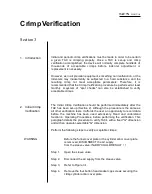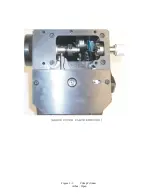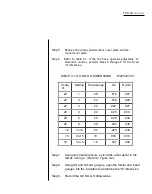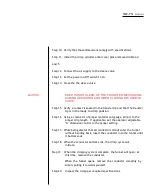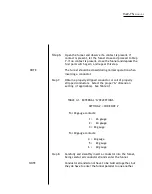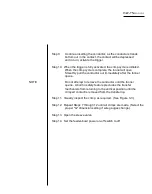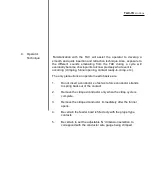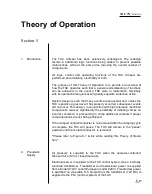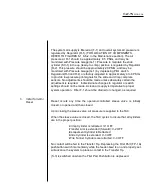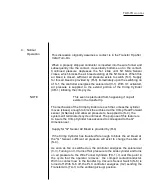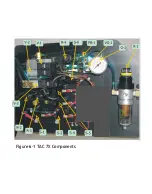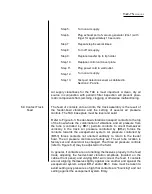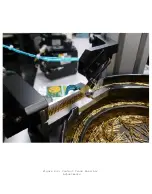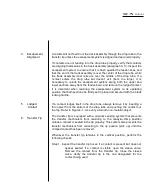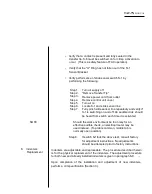
TAC-7X
MANUAL
Step 6.
Open the funnel and observe if a contact is present. If
contact is present, let the funnel close and proceed to Step
7. If no contact is present, close the funnel and depress the
first part switch again, and repeat this step.
NOTE
The funnel should be closed during normal operation when
inserting a conductor.
Step 7.
Obtain a properly stripped conductor or coil of properly
stripped conductors. Select the proper "G" dimension
setting (if applicable). See Table 4-1.
TABLE 4-1. EXTERNAL "G" SELECTIONS.
SETTING # = WIRE SIZE #
For 22 gauge contacts:
1 = 26 gauge
2 = 24 gauge
3 = 22 gauge
For 20 gauge contacts:
4 = 24 gauge
5 = 22 gauge
6 = 20 gauge
Step 8.
Carefully and smoothly insert a conductor into the funnel,
being careful all conductor strands enter the funnel.
NOTE
Conductor strands do not have to be twisted together, but
they do have to enter the funnel parallel to one another.
Summary of Contents for TAC-7AE
Page 6: ...Figure 1 1 TAC 7X Front View ...
Page 8: ... Figure 1 2 Wire Insertion Through Funnel ...
Page 12: ...Figure2 1 Pneumatic Hook Up ...
Page 14: ... Fiqure 2 4 Track Drop Tube Escapement ESCAPEMENT SYSTEM _ _ _ BR ASSEMBL I TRA ...
Page 18: ... ARBOR COVER PLA TE REMOVED Figure 3 1 Crimp Cylinder Arbor Open ...
Page 20: ... ARBOR COVER PLAT E REMOVED Figure 3 2 Crimp Cylinder Arbor Closed ...
Page 23: ... Crimp Inspection Points Improper Crimps ...
Page 33: ...Figure 6 1 TAC 7X Components ...
Page 34: ...Figure 6 2 Control Box Components Figure 6 2 TAC 7X Components Right View ...
Page 37: ...Figure 6 3 Contact Track Feed Air Adjustments ...
Page 42: ... Figure 6 4 Indenter Plate Removal ...
Page 43: ...HOSE CLAMP CAREFULL Y REMOVE Figure 6 5 Indenter Replacement ...
Page 47: ...Figure 6 6 Indenter Adjustment ...
Page 52: ...TAC 7X Pneumatic Diagram ...







